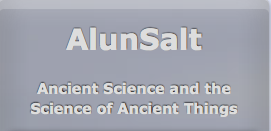Archaeography is a photoblog started in 2004 by Michael Shanks, a Classics professor at Stanford. Since the project began, around 75 new media experts, archaeologists, and photographers have contributed posts. Each post contains at least one photograph, and is accompanied by descriptions of the depicted scene in varying degrees of detail. Some posts link to other blogs where a project is explored more in depth. This blog explores connections between photography and archaeology, following the assertion that we are all archaeologists in some way, and that photography is inherently archaeological. It aims to question how we document events, what we leave out, what we choose to include. For some viewers the tone may be a bit too clouded in the abstract, but overall it is a beautiful site that has potential to appeal to a lot of people.
Indiana Jen is the blogger identity of Jennifer Carey-Lockett, an educator with a passion for history, archaeology, and the use of technology in the classroom. She posts about current happenings related to archaeology and historical preservation, and updates about her experiences teaching high school students. Her blog is fairly straightforward aesthetically and organizationally, which makes navigation simple. She has active viewers — every post is commented on and often shared via Facebook, Twitter, Google, or StumbleUpon. Her audience includes students, fellow educators, archaeologists, and general public with no background in the subjects she discusses. Her posts utilize text, images, audio, and video, and she includes links to all sorts of different blogs and online publications. She does an excellent job of making archaeology totally accessible, and her analysis of current happenings through her unique lens can provide even the stuffiest academic with a new tidbit of understanding.


 Bones Don’t Lie: News and Commentary on Bioarchaeology and Mortuary Archaeology
Bones Don’t Lie: News and Commentary on Bioarchaeology and Mortuary Archaeology